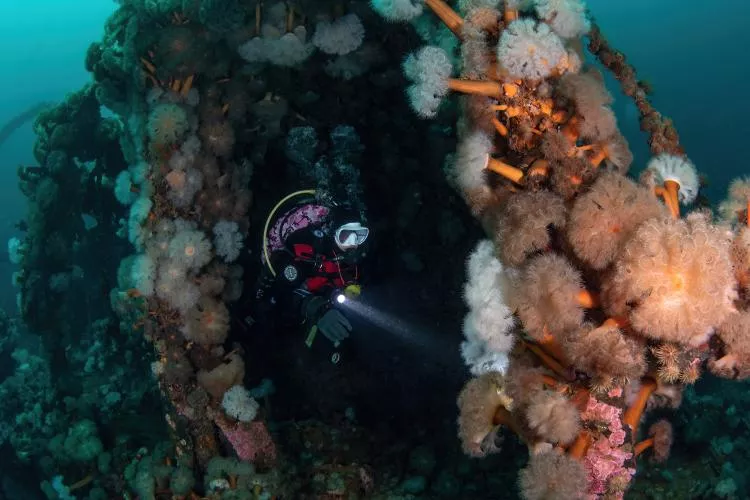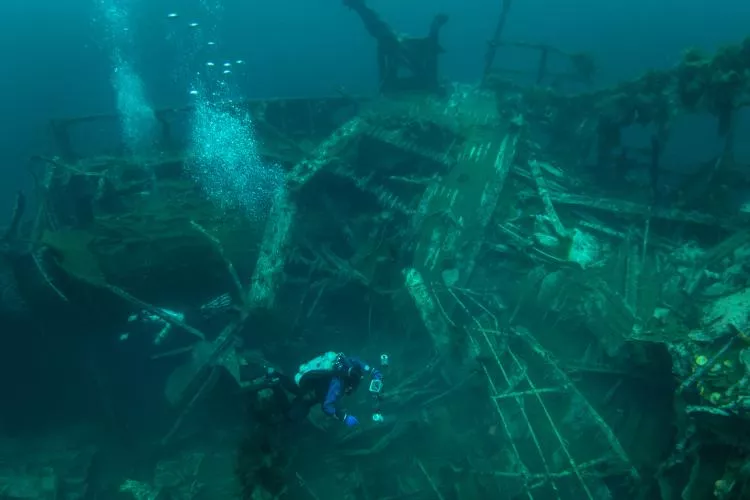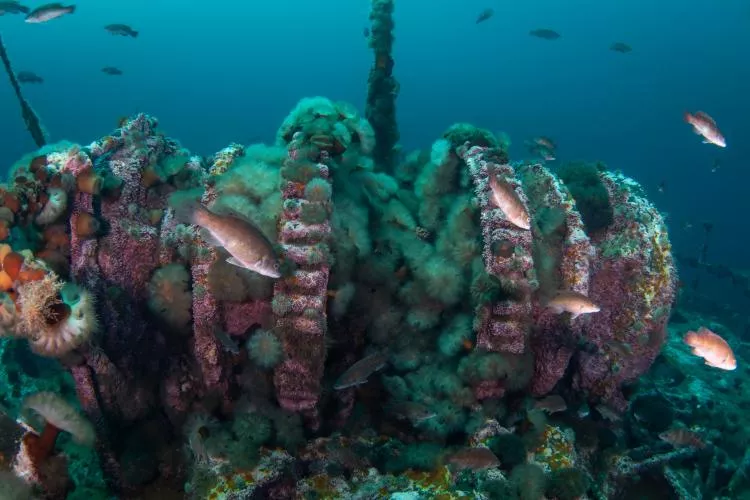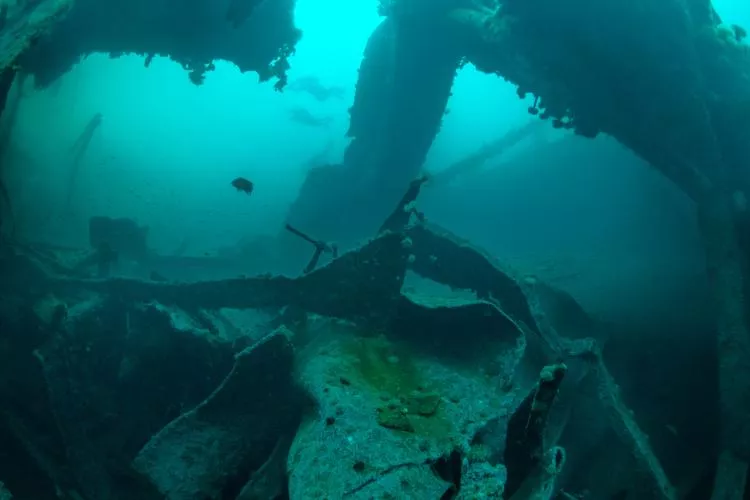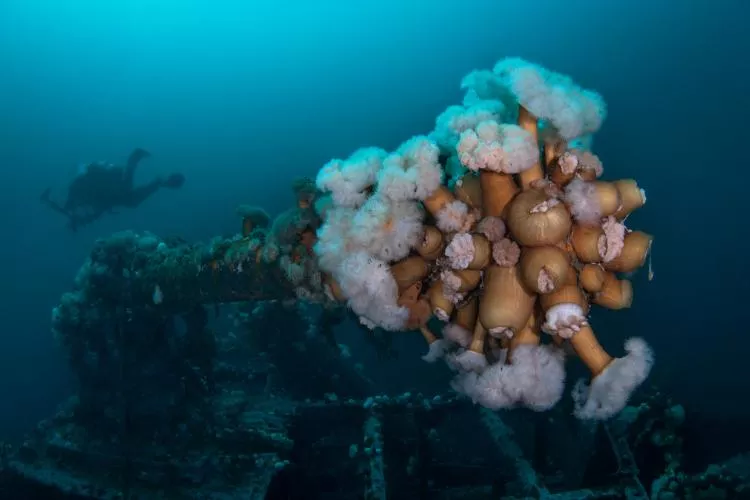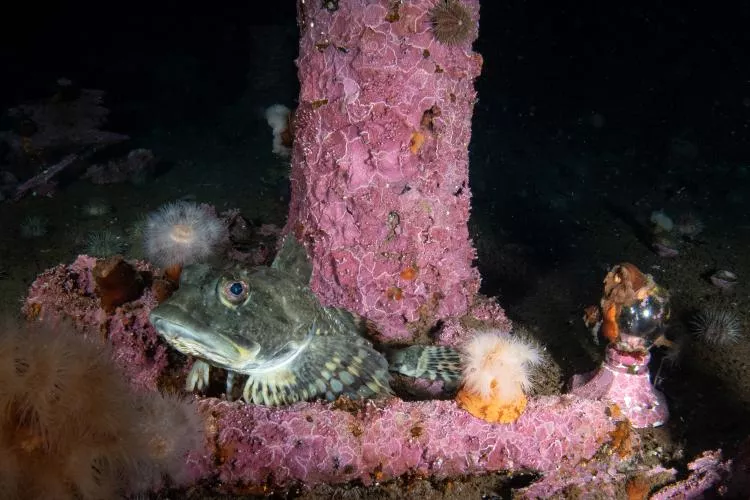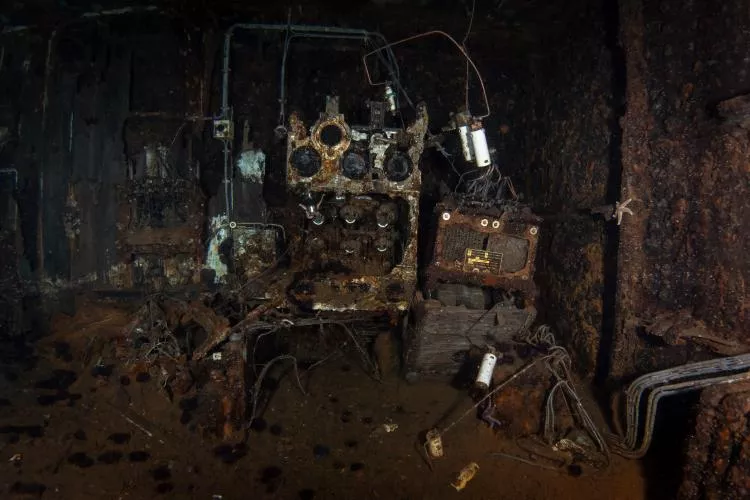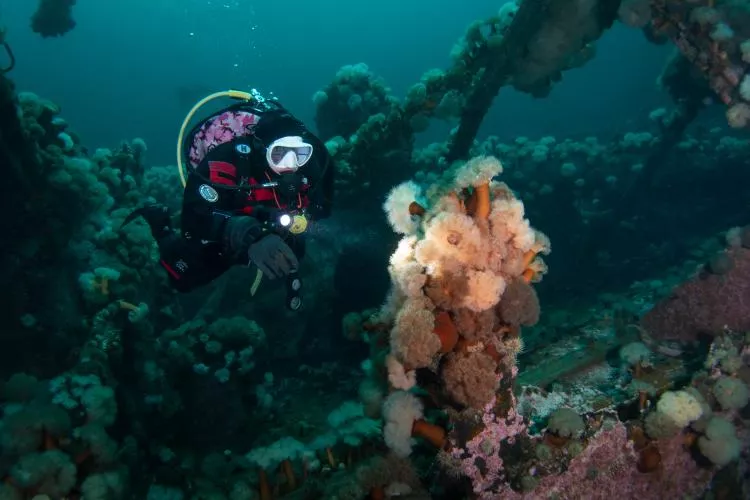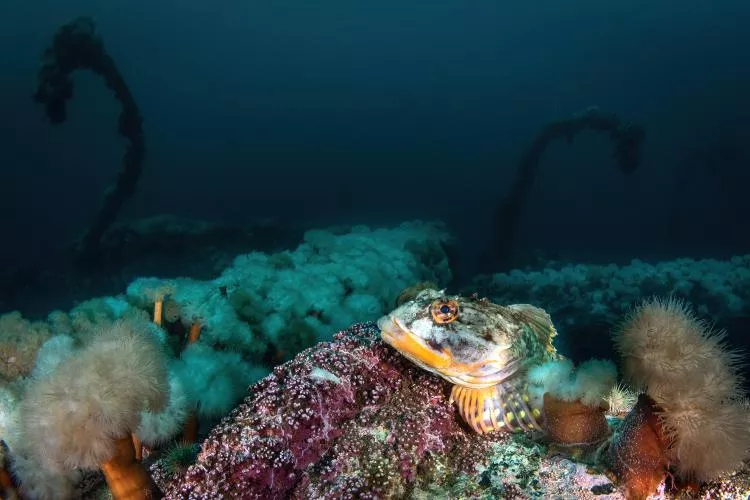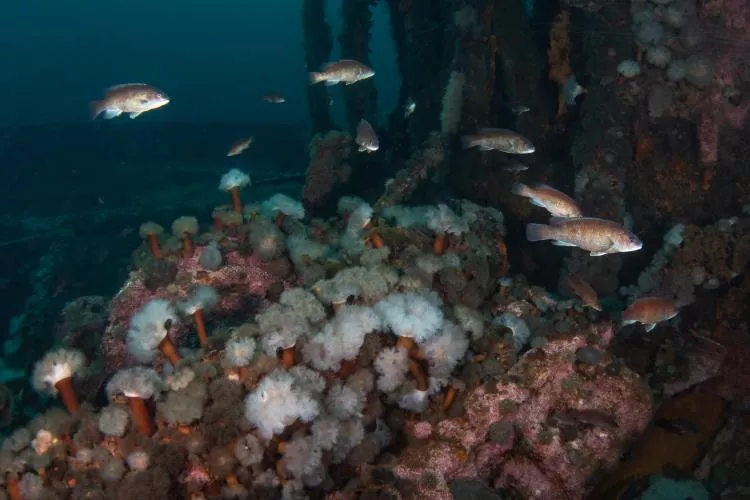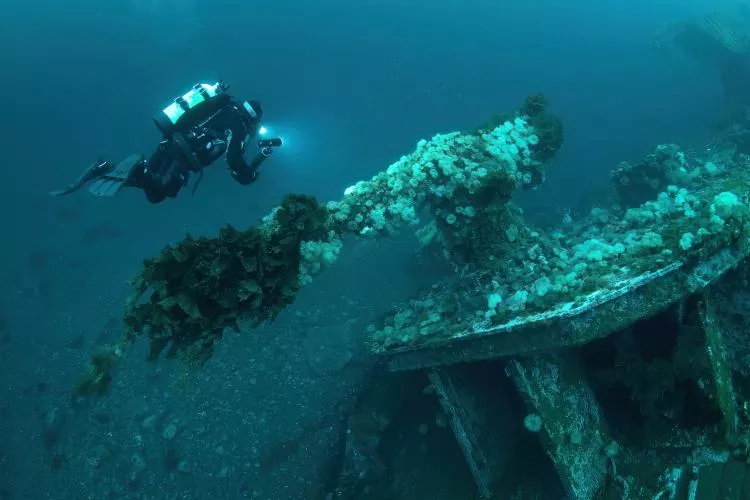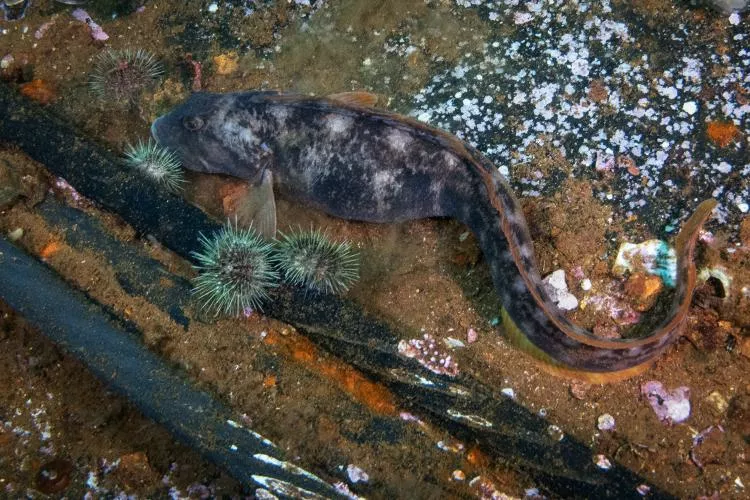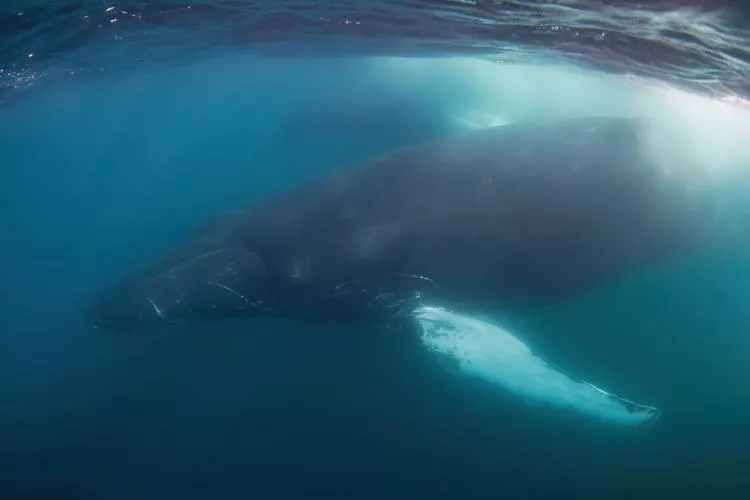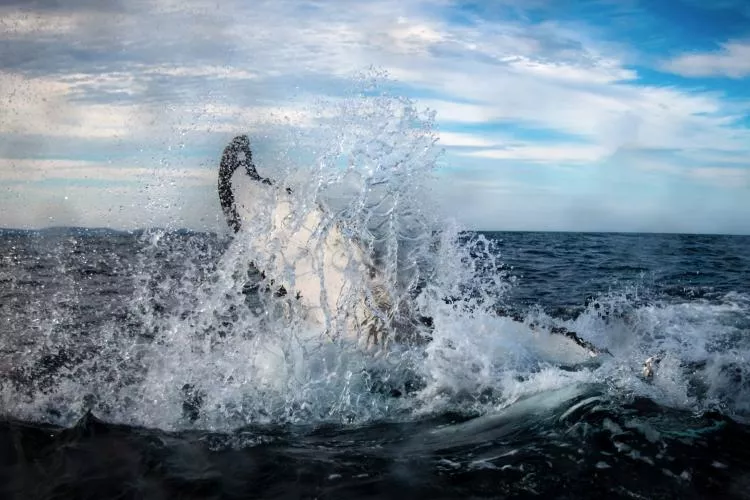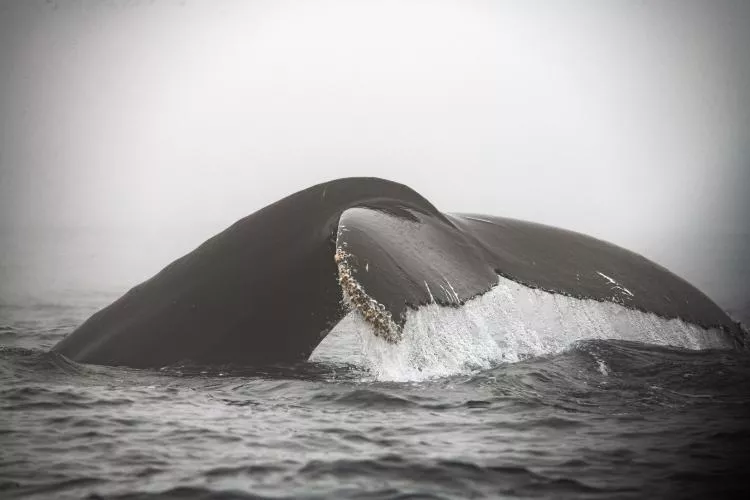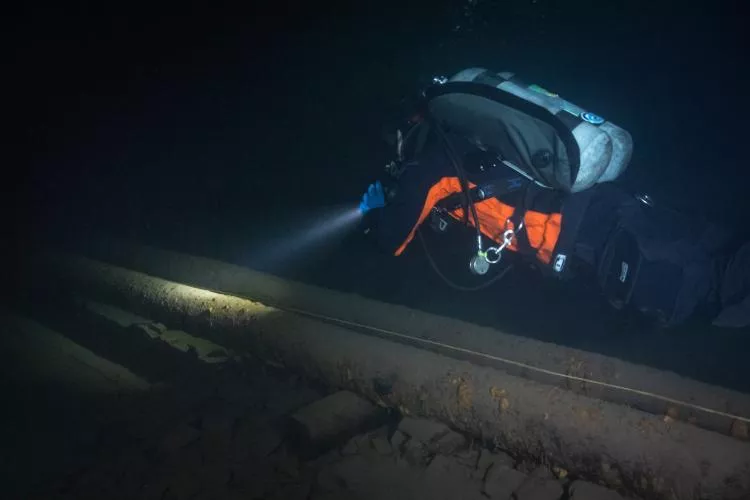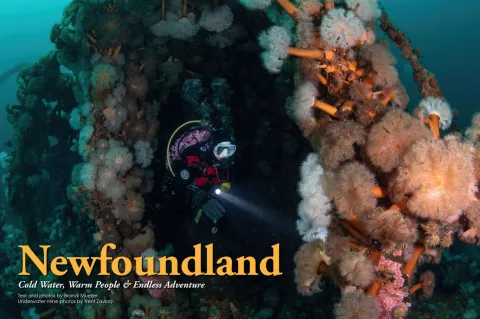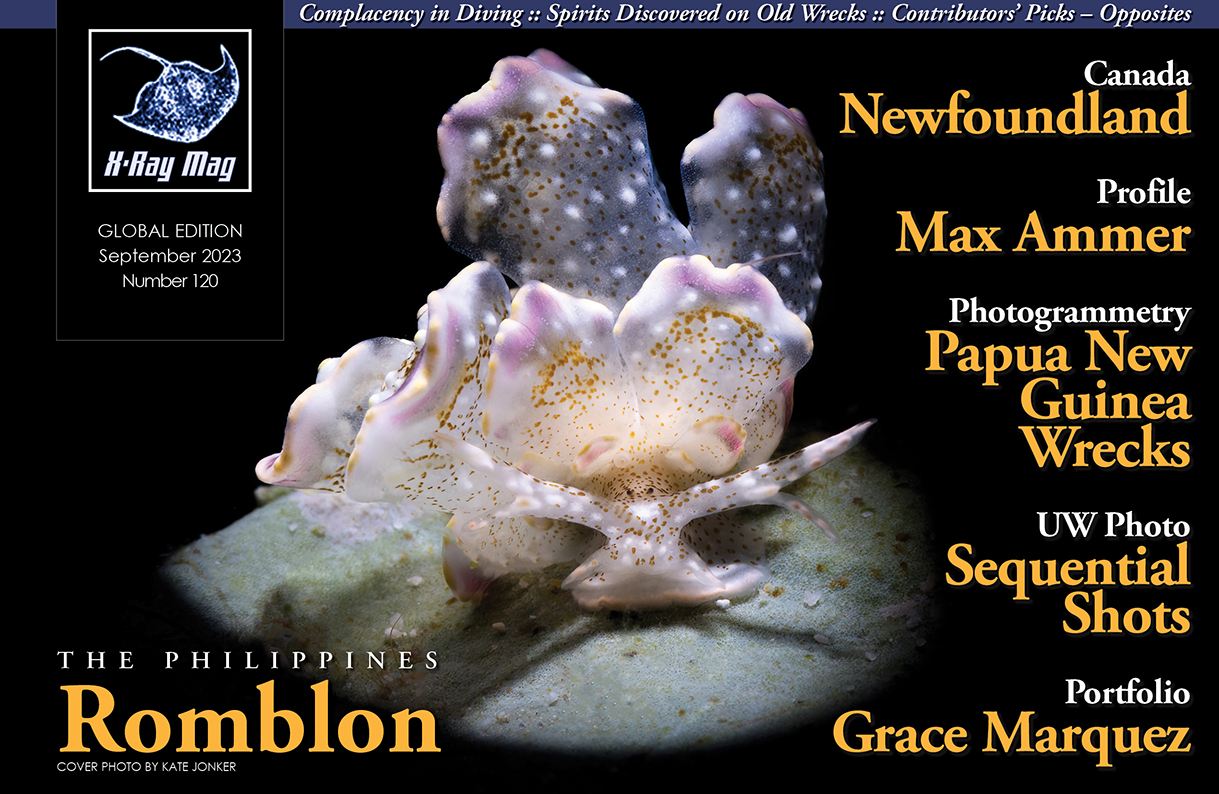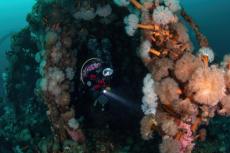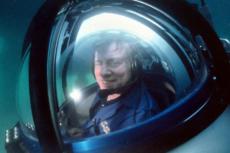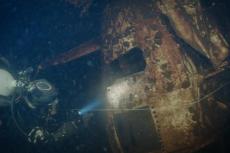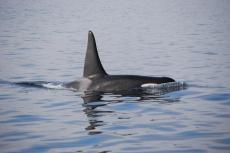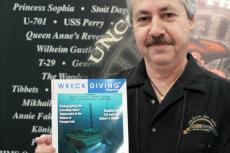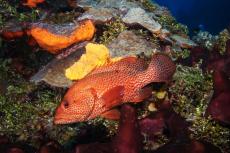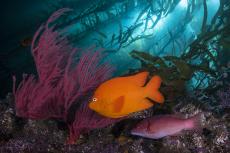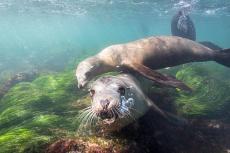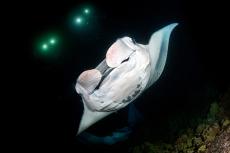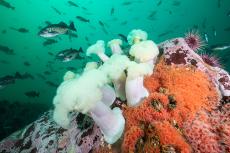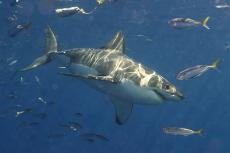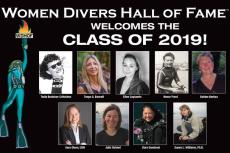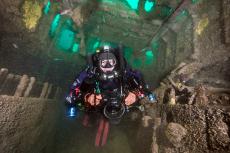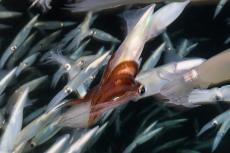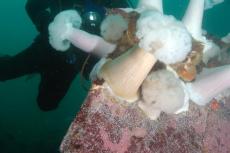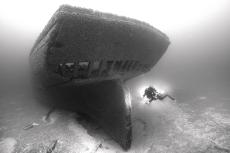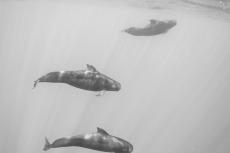Newfoundland, part of the easternmost province of Canada, is a place of wild nature where one can dive on WWII wrecks, in historic iron-ore mines, birdwatch, snorkel with humpback whales and kayak with minke whales. Brandi Mueller shares her adventure there.
Contributed by
Factfile
WRECKS OF BELL ISLAND
SUNK BY U-513 ON 5 SEPTEMBER 1942
SS Lord Strathcona
DEPTH: 65ft (20m) to 130ft (39m)
NATIONALITY: Canadian, built in 1915
LENGTH: 455ft (140m)
TONNAGE: 7,335 tons
SS Saganaga
DEPTH: 60ft (18m) to 115ft (35m)
NATIONALITY: British, built in 1935
LENGTH: 407ft (127m)
TONNAGE: 5,454 tons
SUNK BY U-518 ON 2 NOVEMBER 1942
SS PLM 27 (Paris Lyon Marseilles)
DEPTH: 40ft (12m) to 100ft (30m) in the sand
NATIONALITY: British, built in 1925
LENGTH: 400ft (123m)
TONNAGE: 5,391 tons
SS Rose Castle
DEPTH: 105ft (32m) to 150ft (46m) in the sand
NATIONALITY: Canadian, built in 1915
LENGTH: 455ft (140m)
TONNAGE: 7,546 tons
There are not many places from which I depart with a tear in my eye, but I will be honest with you: I pushed my flight back a day and wished for a delay (which I got) and even sort of hoped to miss my flight. I am quite confident these are the sort of feelings many people have when it is time to leave Newfoundland. They say you leave part of your soul behind, and somewhere between the rugged cliffs dotted with birds, the stormy blue water erupting with humpback whales, the WWII wrecks hidden below and the genuinely kind people above, I think a little bit of my soul was left behind too.
How it all started
Newfoundland was not on my bucket list. It was not even on my radar. In fact, all I knew about Newfoundland was that it was to the north, and cold… and it was in the Broadway musical, Come from Away (ed. – based on a true story about the kind hospitality of a tiny town in Newfoundland towards 7,000 passengers who were grounded there in the wake of 9/11). But around a year ago, I was speaking at the Boston Sea Rovers Show, and an old dive buddy came to see me. While walking around the booths, he stopped to chat with Rick Stanley of Ocean Quest Adventures about a trip he did with them many years ago, to dive the shipwrecks. World War II wrecks? In Newfoundland? I had no idea.
Cold water is not usually my thing, unless there is something really good to see. But as he reminisced and Rick talked about all Newfoundland had to offer, I found myself enraptured, looking around the booth at all their photos and video. I thought, “So, wait… There are humpback whales, too? And puffins? And WWII wrecks?” In my mind, I started dusting off my drysuit and buying some thicker thermals.
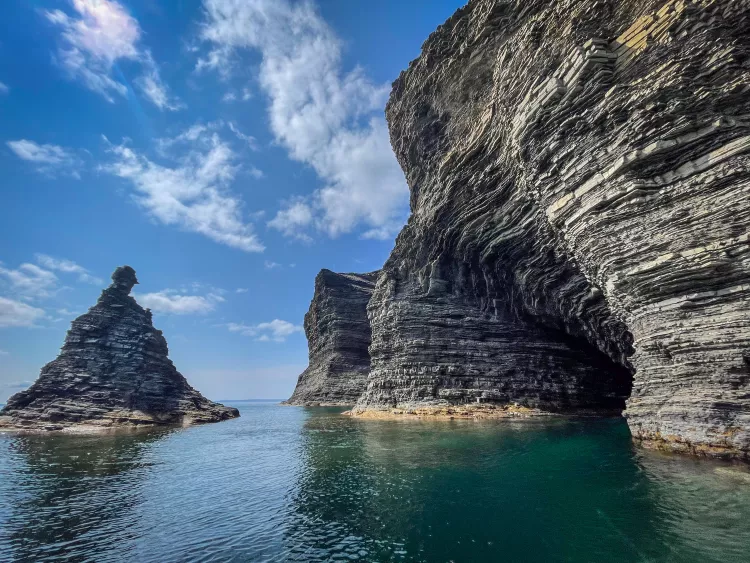
Then Rick pulled out a bottle of Screech, a slightly dubious-looking brown liquid, and small plastic shot glasses. I looked at my watch and it was 10:30 in the morning—plus I would be speaking in a few hours—not really what I would consider a good time for shots. But pretty soon, they had convinced me to drink their special rum.
Apparently, back in the day, Newfoundland shipped cod fish in barrels to Jamaica, and around the world. Then, in Jamaica, they filled the empty cod barrels back up with rum and sent them back to Newfoundland. The story goes that this liquor made you screech when you drank it; hence, the name. I can confirm, it sort of does.
I left my friend and Rick, still chatting, to go get ready for my talk and mostly forgot about Newfoundland until a few weeks later, when I was wandering around the DEMA Show and passed the Ocean Quest booth. Stopping to say hello (but luckily escaping without a morning shot of rum), I could not get the island off my mind. A few weeks later, I contacted Rick about coming for a visit… during what should be the warmest time possible—July, the dead of summer.
Eight months later, I was on my way, albeit showing up a day late due to a cancelled flight; it took much persuasion of multiple airlines to get me there the next day instead of two days later. After an unexpected overnight stay in Montreal and arriving back at the airport to find out I was removed from the early morning flight for unknown reasons, I managed to snag the last seat on standby, with just minutes to spare. Frustrations aside, I was ecstatic to arrive in Newfoundland, exiting the airport into blue skies and summer-like conditions—and I even had my luggage with me.
No time to rest
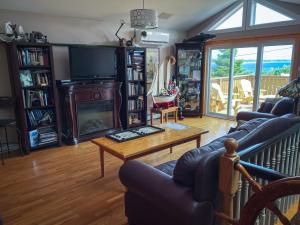
Rick picked me up, and after regaling him with my airport frustrations, he informed me I was scheduled to be kayaking in a few hours. Any plans of a nap or organizing my dive gear were forgotten, and we drove about 20 minutes past the town of St Johns and on to Conception Bay South, where the main Ocean Quest dive shop and lodge were located.
The Ocean Quest Lodge was basically the Airbnb of your dreams, with room for you and twelve of your closest friends (or people who were about to be your new best friends). There was an ocean view and two decks upon which to relax after dives and watch the sunset. Plus, a full kitchen was equipped with everything you needed to make an amazing fried cod and flourless chocolate cake, with your aforementioned new best friends.
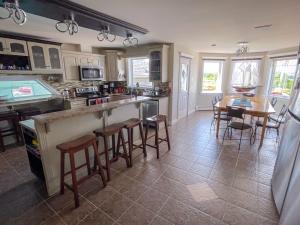
Another building housed a dive gear prep area. Each diver had a cubby, and there were places to hang drysuits, with a dehumidifier to dry them overnight. Ocean Quest supports all levels of divers from beginners (they teach classes and have an onsite pool) through CCR divers, several of whom were diving the week I was there. Outside, there was ample space to hang gear, and one of my favorite touches were the nails around the deck, where one could hang wet gloves, boots and hoods. Plus, there was a lovely fire pit for evening entertainment.
In addition, there was parking, six rooms that accommodated up to 13 people, six bathrooms, and even a washer and drier (to keep those smelly undergarments fresh day after day). The living room area was full of stuff to look at, including styrofoam cups that had been taken to the Titanic, artifacts, bottles of Screech, and numerous awards bestowed upon Ocean Quest. Then, there were the bookshelves, which contained a small library of my dreams, with books on diving, fish life, shipwrecks, Newfoundland, history and the world beyond. I wrote down a few titles for later and thought it would be fun to spend a week just reading the books, but I could tell already that there probably would not be that kind of free time during the upcoming week.
Kayak tour
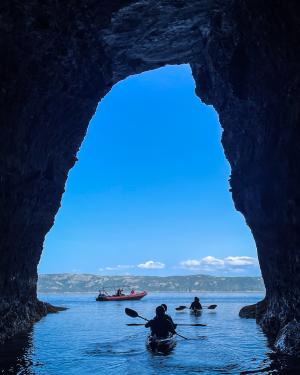
After a quick tour of the house and gathering my camera gear, I was sent off to kayak around Bell Island. The boat was departing just a five-minute walk from the lodge, and in the near 80°F (~27°C) heat, I was quickly realizing I had packed all wrong, bringing mostly sweatshirts and long sleeves. I expected wind, clouds and cold; but it was all sunshine and hot outside, with the ocean as calm as a lake. To me, it was a beautiful day, but to Newfoundlanders, it was a heat wave.
Departing the harbor, we headed by zodiac towards Bell Island. The rugged, green island was off in the distance, making for a picture-perfect scene, along with a white sailboat, which graced the seascape, almost as if it had been placed there for the photo. Then, the black hump and fin of a minke whale made its presence known. We had been on the water less than five minutes.
On closer inspection, minke whales seemed to be surfacing all around us, but we kept going. Rounding the back side of Bell Island, the sheer cliffs and rock pinnacles looked like a place in which some sort of mythical creature might live, but, in reality, over 2,000 people live there today. In the heyday of the island’s iron ore mine, which operated from 1895 to 1966, the island had as many as 12,000 people.
Then, we saw the view that gave the island its name, a bell-shaped opening between the main island and a rock pinnacle. Our captain skillfully glided the boat through the bell. Looking down into the clear waters, we could see fish, kelp and jellyfish.
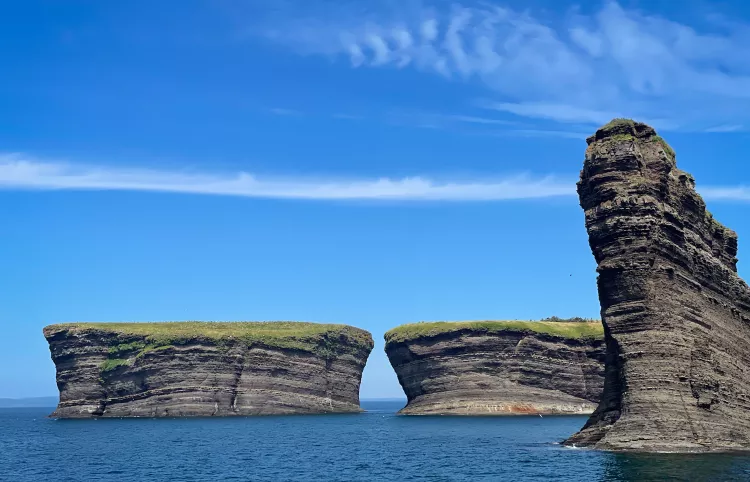
Continuing on our way, we stopped the zodiac and offloaded the kayaks. The sea was still glassy, and we began paddling close to the island and exploring the inside of several sea caves. A slight swell lifted us up and rolled us back down, as we looked up at the sheer cliffs. Another minke came up for a breath of air, revealing itself to be quite close and swimming in our direction, so we all stopped and hoped it would surface closer. Waiting for the whale to breathe again, we noticed there were moon and lion’s mane jellyfish all around us. The clouds reflected perfectly in the still water, so the moon jellyfish seemed to be swimming through a watery sky of clouds.
The whale finally surfaced about ten minutes later, well past us, and we kayaked back to the zodiac to pack up and head back to shore.
Owners of Ocean Quest, Debbie and Rick, kindly invited me out to dinner with some of their friends. I wondered if I was going to be a bit of an outsider, but pretty soon, I was laughing and listening to the group sing along with the open-mic-night musicians—songs I had never heard before. I could not help tapping my foot and occasionally whipping out my smartphone to record the scene. After a few delicious local beers and enjoying a Newfoundland staple of cod fish-n-chips, I was full, happy and ready to crash.
The dinner was also my first introduction to Newfoundlander slang, and my dinner companions fired sayings at me, to see if I could guess what they meant. “Would you like some ‘Newfoundland Steak’?” they asked. I am not a big steak-eater, so I said, no. But they erupted in laughter, as they told me it was actually bologna (sausage). What were locally known as “nippers,” which came out as the sun started to set, were actually mosquitoes. And, of course, as a visitor, I was one of those who “come from away.”
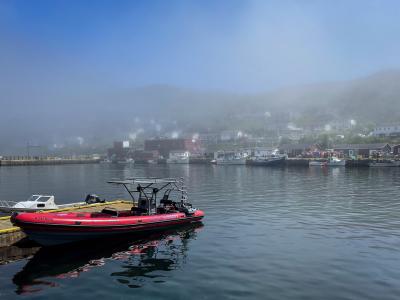
The fog
I woke up the next morning quite early, but it was already bright daylight and blue skies outside. The sun rises around 5:00 in the morning in July. Rick told me the keys were in the truck, and I should go “get lost,” because that is what you do in Newfoundland. I reconfirmed a 7 a.m. starting point for the next day, for diving, to make sure I was “un-lost” by that point.
Making my way towards Cape Spear, the most easterly point in North America, I seemed to pick up clouds and fog on my tail as I crossed over the island and arrived in a white, rolling mist. I had been hoping to see whale spouts from the high vantage point, but all I saw was fog. Setting off to see the lighthouse, it felt like I was only 10ft from it before it finally came into view. I could imagine the expansive blue water extending all the way to Europe, but I could not make out a single wave through the mist.
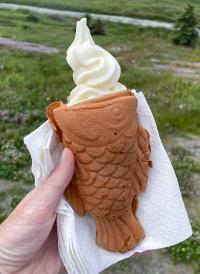
In World War II, a Canadian-manned gun battery, as well as barracks and bunkers, was built here to defend the area. I walked past a 10-inch M1888 gun and onto the cliff, to see inside the bunkers. I climbed some stairs leading up into the haze, and soon there was a lighthouse in front of me. Next to it was a café, where I stopped for a cup of coffee and could not resist an ice cream in a “fish waffle.”
As I sat outside eating cold ice cream and drinking warm coffee, the mist lifted for a moment, and I realized I was incredibly close to the parking lot. I had taken a much longer route up and around when I could have just gone up a few steps to the lighthouse. But in the fog, I had known no better. The long route was actually more fun to hike anyway.
In search of whales
My next stop was Petty Harbour, where I would be joining one of Ocean Quest’s wildlife snorkeling tours. I met up with Meg from yesterday’s kayak tour and Jonny O, the CFO (or “Chief Fun Officer”) of Ocean Quest and got settled in with a wetsuit, gloves and hood.
We departed Petty Harbour, in that same cloak of white mist. Just as I wondered how we would spot the whales in this dense fog, Johnny O told the group, “Well folks, today we will be finding whales by sound and smell.” I understood the part about the “sound.” Humpback whales are mammals and must come to the surface to breathe, releasing spent air, loudly, back into the atmosphere—but the smell? Well, apparently, whale exhales have the aromatic qualities of fish rotting in the sun.
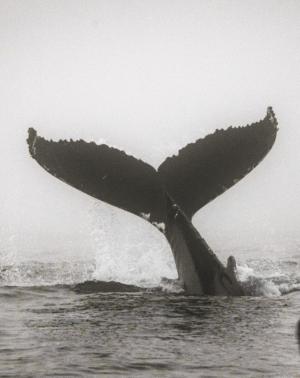
I do not know how confident I was in Johnny O’s sound and smell whale-finding skills, but his charisma was top-notch, so it was tough to doubt him. Soon enough, we were off, speeding over lake-calm water, through an enchanting and maybe slightly eerie haze. Smoke on the water.
Outside of the harbor, I could just barely make out the cliffs to our right—they were nothing more than gray texture and green dots in the fog. “Thar she blows!” We had not even been out for five minutes, and a whale surfaced mere feet from the boat—so close that my telephoto lens zoomed all the way in, and I still could not get the whole tail in frame. They had told me Johnny O had a sixth sense for finding whales. I guess they were not kidding.
We continued in the fog, and I was happy to see there was GPS on the boat, so we would not accidently end up on land due to the mist. This really brought home the difficulties of being a seafarer in this part of the world. Often, one cannot see anything.
The boat steered close to land, and the cliffs in the mist rose up like something out of a fairytale. Flocks of puffins flew by, appearing out of nowhere and disappearing just as fast. We came across a few other whales and eventually made our way back to Petty Harbour.
Bell Island wrecks & iron ore
There is overwhelming history in and around Newfoundland. The Vikings left their mark over a thousand years ago, and then Europeans made their way there, first arriving in 1497. They gave it the name “New Found Land,” and the British flag was raised here until 1949, when the province became Canadian. Other fun facts include Water Street in St Johns being the oldest city in North America, and just above St Johns is Signal Hill, where the first transatlantic radio signal was received in 1901.
Bell Island was originally known for fishing but reports of valuable iron ore came as early as 1578. In the 1890s, professional mining companies started to develop the site, beginning operations officially in 1895. The island made it easy to load ships with the iron and transfer it, first to Nova Scotia and soon afar, as it became a vital point for world steel production, with steel being shipped to the United States and Continental Europe.
The small island, only 5.9 miles (9.5km) long and about 2 miles (3km) wide, turned out to have much iron ore below and beyond. Rich with a layer of 51 percent iron ore that extended miles out under the sea, the mine was very productive.
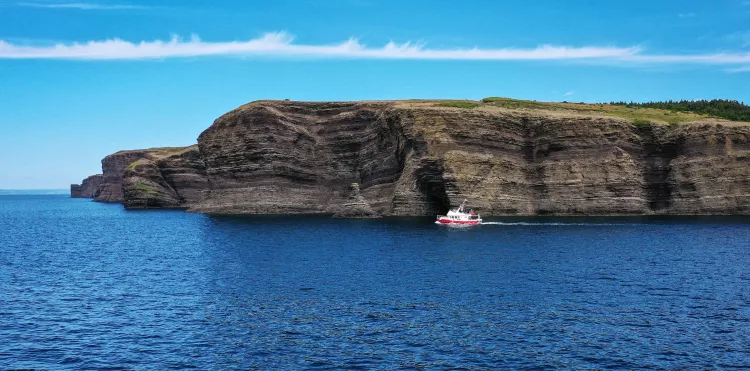
Germany was a main buyer in the early 1900s, but when WWI began (and Newfoundland was still under British rule), they stopped selling to their rival. The iron ore continued to go to Britain and was used to defend Britain against Germany.
After WWI, the Germans once again became a purchaser. In 1939, over 500,000 tons were exported to Germany. But in a similar vein, when WWII started, the Germans were cut off from their supply. The Allies then continued to receive the resource for the development of their weapons. This clearly did not make the Germans happy. Not only did they want the resource, they also did not want the Allies to have it, to make weapons to be used against them.
It is not surprising that the Germans wanted to disrupt this supply chain, and fully loaded cargo ships would be easy targets in the harbor. On the night of 4 September 1942, the U-513, captained by Rolf Rüggeberg, snuck into the harbor under the cover of the stern of the SS Evelyn B. Captain Rüggeberg hid until the morning and fired twice on the SS Lord Strathcona, but the torpedo detonators had not been armed, and they simply sank to the bottom.
The Evelyn B spotted the sub and opened fire, but the U-513 dived. It decided on its next target, the SS Saganaga, hitting it twice and sinking it within minutes. It then went back to the Strathcona, although the Strathcona swung around and hit the U-boat’s conning tower. It caused some damage to the sub, but the U-boat went under and fired two torpedoes, sinking the Strathcona in minutes. Chaos ensued and small fishing boats came from all over to try and rescue survivors, but the U-boat disappeared into the Atlantic.
This was not the only attack on the area. Less than two months later, on 2 November 1942, the U-518, led by Friedrich Wissmann, made a similar play. Making its way inside the harbor, the U-518 fired on the Anna T, but missed and struck the Scotia cargo pier instead, severely damaging it. Then, it sent two torpedoes to the SS Rose Castle, one hitting the stern and one hitting the bow, sinking it.
The PLM-27 (Paris, Lyon, Marseilles), a British-owned, free French Naval Forces ship, fired flares to try and help the survivors, but in its efforts also illuminated itself to the U-518. A torpedo struck amidships, almost splitting the ship in two. As boats came out to rescue, this U-boat also escaped under darkness and confusion.
Sixty-five lives were lost between the two attacks. For the Germans, it was a huge success, sending thousands of tons of iron ore, which would otherwise be used against them, to the bottom of the sea and removing four of the ships that carried it. A month later, the Newfoundland government responded by putting anti-submarine nets in Conception Bay, and no further attacks occurred.
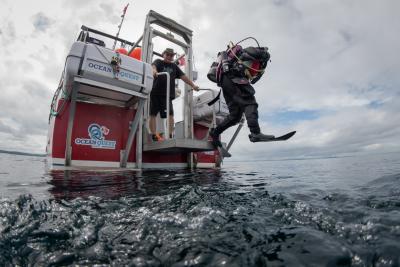
Wrecks of 5 September 1942
Waking up early on my first day of diving, I made my way up to the kitchen and found I was no longer alone in the lodge. A group of divers from Dan’s Dive Shop in Ontario had arrived the night before, and we would be on the boat together. Heading out to prepare gear, Rick had a truck backed up to the dive gear room, and we loaded the tanks onto the truck, then the gear, then the drysuits. The sight was almost comical: a big truck overflowing with dive gear.
We had a dive briefing to prepare for the week’s dives, and Rick discussed Ocean Quest’s “Pillars of Success,” something I had already heard about on the kayak and snorkel tours. It included being respectful to other people on the trip, the importance of education and learning something, and being respectful to the environment. I appreciated Ocean Quest’s dedication in taking care of their customers and the phenomenal environment they were about to take us to. I mentally wished every dive operation had something similar, to remind people of the privilege and responsibility we have.
It was blue skies again, and the day was already heating up. We walked five minutes down to the harbor and loaded the 42ft cruiser, called the Mermaid, with gear. Then, we headed out to the wrecks. Minke whales were once again making themselves known, with black fins breaking the surface, and we were surrounded by stunning landscapes everywhere we looked.
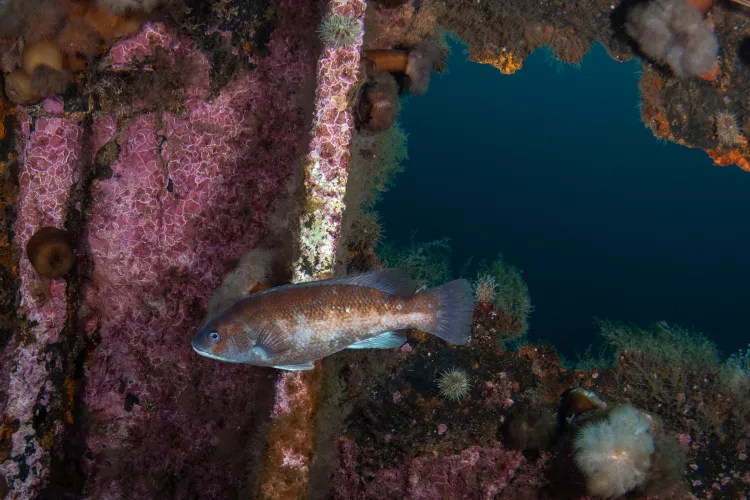
SS Lord Strathcona. Our first dive was on SS Lord Strathcona. I had the honor of having Rick as my dive buddy and guide, and we waited for the rest of the divers to get in before we geared up and joined them. As a mostly tropical-water diver, the entry into cold water was “an awakening,” to say the least. But I felt cozy in my drysuit. We swam to the bow of the dive boat and headed down the line. At around 15ft (3m), there was a very severe thermocline, and let’s just say, the water was brisk.
As we made our way down the line, it was not long before the massive ship came into view. The visibility was incredible, and the first thing I noticed was how much life was on the wreck. Anemones of pink, white and orange covered the wreck’s structures. The second thing I noticed was how intact the ship was. It looked as if it might have sunk just a few years ago—not over 80. We swam about half the length the ship, with Rick pointing out interesting objects like an anchor on the deck and the 4.7-inch deck gun.
I wanted to stay longer, but at around twenty minutes into the dive, my poor fingers were frozen. I signaled that I was okay, but cold and ready to go up. I did not even want to look at my dive computer to find out how cold it really was. I realized as we made our slow ascent back to glorious summer sunshine, into what the Newfoundlanders were calling a heat wave (and I considered normal temperatures), that I had never really asked what the temperature would be underwater. I knew it would be cold, but for some reason, I had it in my head that it would be around 55°F (~13°C), which was the typical surface temperature this time of year—but the thermocline came quick and drastic.
Back on the boat, the other divers started returning and talking about the excellent dive—plus, everyone was enjoying the fantastic elevator/lift system on the back of the boat, which brought divers up and on board, without any difficult work climbing ladders. It was then that someone said, “My computer read 32°F (0°C).” My eyes must have gotten wide, and I went to my dive computer to confirm this—no wonder my fingers were cold!
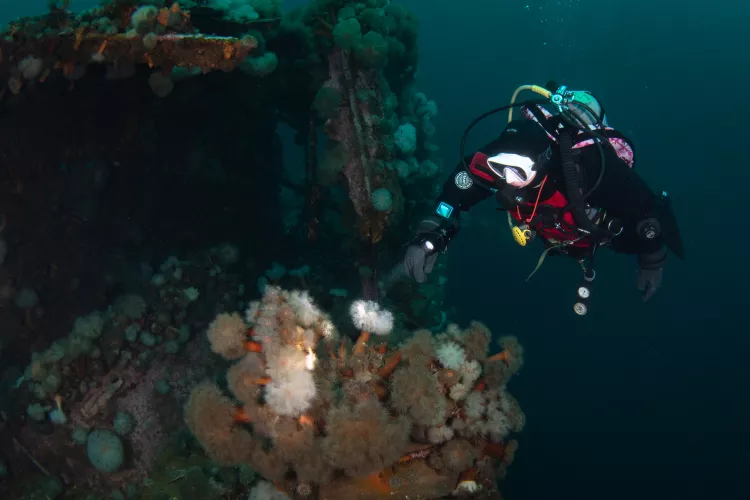
SS Saganaga. Warming up in the sunshine, we moved on to SS Saganaga. Here, I would be getting the golden treatment, as Debbie Stanley would be my dive guide and buddy for this dive. She said this was her favorite wreck, and she loved all the anemones and colorful marine life on it.
She was not kidding. The Saganaga was completely covered with anemones. When I flashed my strobes, the colors lit up like a pastel painting of a forest full of mushroom-like trees. It was really beautiful, and Debbie was a fantastic model, posing perfectly with her light shining and lighting up the anemones. I followed her through several swim-throughs, with nearly every square inch covered in puffball-like anemones. It felt more like a “Candy Land” than a WWII wreck.
Once again, at around twenty minutes, my fingers were the determining factor of cold. (Next time, I will bring dry gloves). It was an internal struggle though. The wreck was so pretty, and I could have stayed an hour taking photos, but my fingers were struggling to operate the buttons on my camera. I gave the signal, and we headed back up. But wow, even with it being a short dive, it was a great dive!
I never expected to see so much life on a wreck so far north and at such low temperatures. There were colorful sponges covering the decks, and anemones crowded davits and seemingly any surface area sticking up from the wreck. Crabs were tucked into the anemones, mostly camouflaged, and fish slowly made their way around the wreck. There were flounder and ocean pout fish—so much life in an unlikely place. Apparently, this unique biodiversity was fostered by the cold Labrador Current meeting the warmer Gulf Stream, bringing together marine life from different ecosystems and making this area particularly rich.
Once again, I was exposing my frozen fingers to the sunlight to thaw. But Debbie and Rick had a better idea of how to warm us up: soup—homemade (with love). We all gathered inside the boat, warmed our fingers on the bowls and enjoyed the fantastic soup, as we made our way back to land.
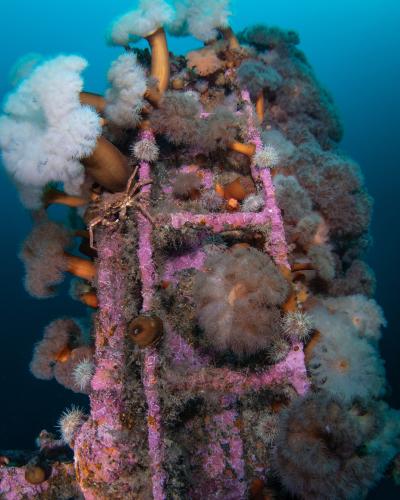
Wrecks of 2 November 1942
Our second day of diving was similar to the first, but we would be diving SS Rose Castle and PLM-27 today. We loaded the gear onto the truck, made our way to the boat, and headed out, on a slightly windier and rainier day.
SS Rose Castle. The Rose Castle was the deepest wreck in the area, with the top deck being around 105ft (32m). Today, my dive guide would be the “fun officer” himself, Johnny O. After the dive briefing, he asked me where I wanted to go on the dive, and the main thing that stood out in my mind was what they called the “Marconi Room”—the ship’s radio room, which was still very much intact.
That was where we headed first. Sticking my head (and camera) into the room (but not going in all the way, so as not to stir up silt for everyone else), I could see there was equipment, cords and even panels with writing still visible. It was as if one could still just turn a few knobs and call the Coast Guard, or maybe tune in to a 1940s radio station.
We swam around the superstructure for a bit, and visited the gun, which had a group of anemones growing right off the barrel. It looked as if someone had fired the gun and a balloon of pale pink anemones had exploded out of it. Soon enough, the depth and cold got to me, and it was time to return to the surface.
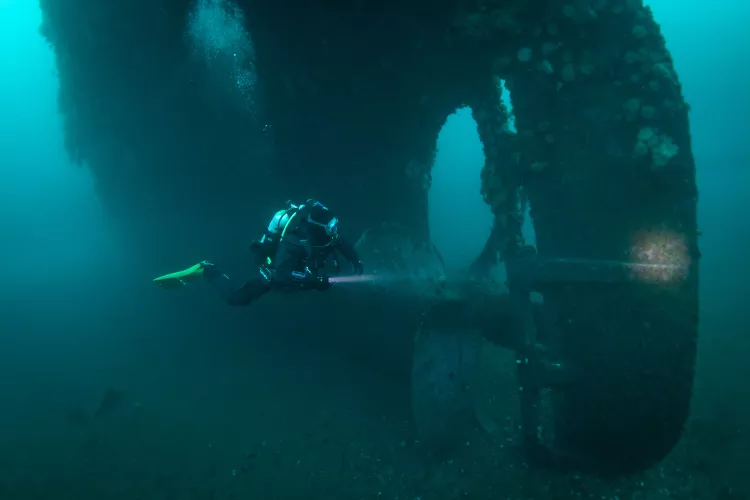
PLM-27. Our second dive was on the PLM-27. This ship was almost torn in two by a torpedo, which hit midship. Rick briefed us on the destruction caused by the torpedo, ripping and bending metal, and with dive guide Jason, we planned to swim around the ship, seeing the propellor and venturing around to the point of destruction.
Visibility was shockingly clear again, and dark maroon lion’s mane jellyfish could be seen throughout the water column. The propellor was huge, and Jason posed in front of it, to give us a sense of scale. Then, we continued around the ship and the hole (or rather, the tear in the entire side of the ship). The metal was simply splayed open, bent, curled and jagged. It was clear it was the massive force of a torpedo strike that sank this ship.
Swimming up through the destruction, we returned to the top deck. White, wispy haze could be seen coming up from the cargo holds. Probably an oxidation reaction, but the holds looked as if they were boiling over with steam. Visibility was so good, I could see the shadow of the Mermaid on the surface, from the wreck.
Back on the surface, it was time for soup again. Today’s flavor was Moose Stew and was, by far, the fan favorite. The moose ended up in our bowls thanks to Rick himself (with permit, obviously). This may sound cliché, but I felt like one could actually taste the love in the soup: their love of the Bell Island wrecks, their love of diving and adventures, and their love for the people who “come from away.”
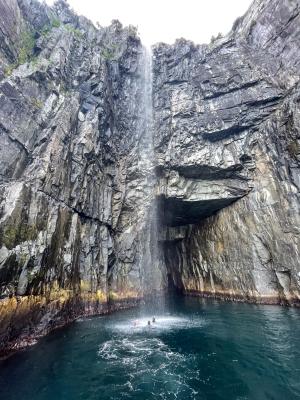
The people you meet
Back at the lodge, my new Canadian housemates were talking about making steaks for dinner. They invited me to join, so I ran to the grocery store to get ingredients for a cake for dessert. There may have been some wine involved, and pretty soon, the kitchen was full of people chopping vegetables, marinating steaks and refilling glasses. The dinner party eventually made its way outside to the firepit and lasted a bit longer into the night than was probably advisable, given the diving activities the next day.
The lodge provided an exceptional atmosphere for a “feels-like-home” experience. For several nights, we cooked together. There were two more days of diving, visiting each of the four wrecks once again, and it was clear that two dives on each wreck were not nearly enough. Sometimes referred to as the Truk Lagoon of the north, this submerged battlefield was an underwater museum, frozen in time.
Searching for whales, part two
Rick was determined to show us whales, so after our last dives on the wrecks, we packed up our dive gear, grabbed some snorkels and headed to Petty Harbour. Blue skies and the vivid colors of the buildings in town greeted us, making the fog on my last visit a distant memory. We headed out in the zodiac and cruised along the sheer cliffs, which I could only just barely make out on my last visit. A baby bald eagle was spotted on the cliffs, along with endless birds.
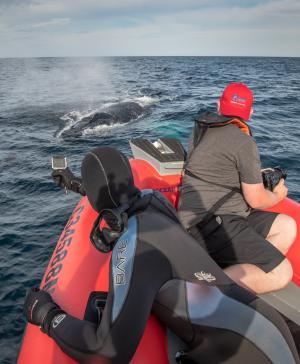
We cruised into a sea cave, and a few people jumped in, under a waterfall, where the water pouring down was warmer than the sea water. Moving offshore a little, we jumped in to check out some jellyfish and possibly some schooling capelan. While in the water, a spout occurred close by. I think Captain Johnny O was using his whale-whisperer skills again, and as we scanned the horizon and the blue water below, we got a glimpse of a humpback whale swimming right next to us. And then there were two. They did a pass by us, one towards the surface and the other under us, with its white belly up, as if showing off. The giant tails passed, and it reminded me of how small I was in this big ocean.
Assuming the encounter was over, we laughed and yelled in delight at what we had just witnessed, when we could hear Rick and Johnny yelling to us, “Behind you!” The whales had come back for another look. I could hear the massive exhale of one surfacing close by, and then, its head came into view underwater. Getting larger and closer to me, I could make out the eye looking right at me. There is something truly special about being eye-to-eye with a humpback whale—a memory I am sure none of us will forget.
Even as we were getting back into the boat, the whales did not seem to want to leave us. They surfaced right next to the boat (blowing a very fishy aromatic scent over us with their breath). We waited for them to descend and slowly made our way back towards Petty Harbour, smiles all around.
Full circle and what to come back for
The last day of diving involved getting up extra early to catch the ferry to Bell Island. I had kayaked around it, dived the wrecks next to it, flown my drone beside it, but I had not yet touched land. Another bluebird day met us, although the 5 a.m. wakeup call still did not get me up in time to see the sun rise. I watched the other divers load their gear onto the truck. Today, I would just be observing, but they would be diving Bell Island’s iron ore mine.
Throughout the history of the mine, it became more and more expensive for the mine to operate as they got farther and farther under the sea. By 1951, they were three miles out under the sea. As new technologies developed and other mines around the world were producing more ore, at less cost, the mines at Bell Island started closing. By April 1966, all mining had come to an end.
The reason behind the wrecks, which we had been diving, was this mine, so it only seemed natural that the next step for us would be to dive the mine. Rarely dived, and by a very small number of people, the group I had been sharing the lodge with were going to increase that number.
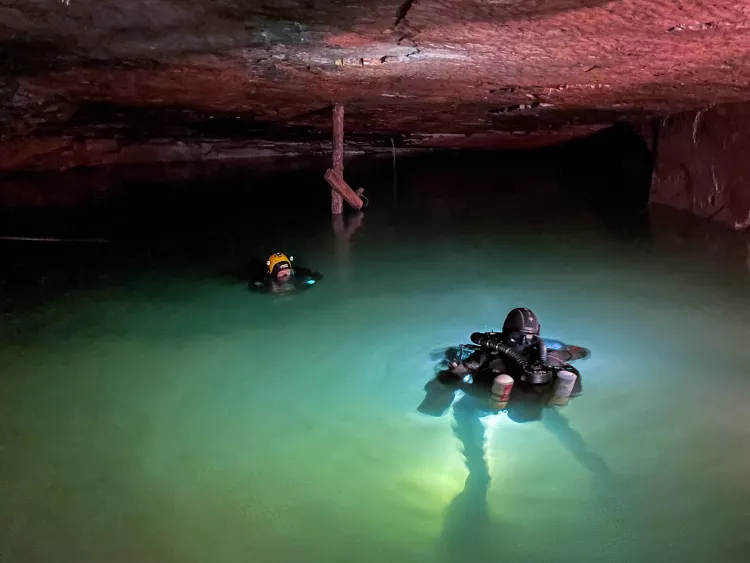
Listening to the dive briefing delivered by Rick and Johnny O—about the mine, dive plan and safety—I was struck by a comment: Johnny O said, “Remember that enough is as good as a feast.” I hope to use this quote in technical diving in the future. I like how it acknowledges that we should plan our dives and dive our plans, and when the temptation to push a little bit more arises, because everything is going so well, maybe we should be content with what we have already had. Like the aforementioned “Pillars of Success,” I appreciated the genuine and meaningful approach to safety that Ocean Quest has.
I played paparazzi for my new friends, as they prepared for their mine dive, and after most had entered the water, I made my way back above ground to the museum to meet with Teresita McCarthy, the director of the Bell Island Community Museum. She told me the fascinating history of the mine and how many of the employees, who gave tours at the museum, had family members who worked in the mines. The amazing artifacts in the museum included stunning images of the mine during its operation, artifacts and personal effects of the miners, relics from the Bell Island wrecks, and even German papers and insignia from Rolf Rüggeberg. (How that ended up there is another story in itself.)
As with so many of the people I met in Newfoundland and the places I visited, the museum was a clear labor of love. The people who have built, maintained, expanded and continued to keep it operating have deep roots invested in the mine and the island, and their passion keeps it going—spreading that passion to everyone who comes to see it. The hard work and dedication of Rick, Debbie, the people of the Bell Island Community Museum and beyond, even got the German U-boat attacks at Bell Island in 1942 designated as a national historical event in 2019.
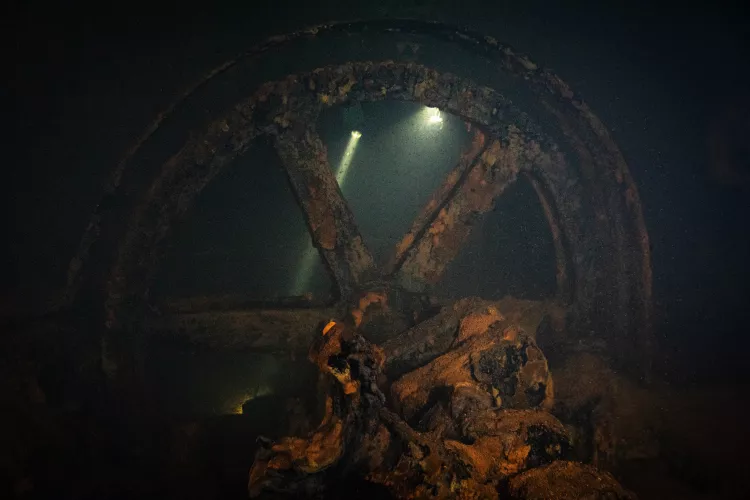
Back to the mine... All had gone well on the mine dive, and the divers told me about the old machinery they saw, just left behind when the mine abruptly closed and was flooded. On the dive, they had followed the line and the pipes that would have previously pumped water out of the mine. Admittedly, I suffered a bit from “fomo” (fear of missing out), having not dived with them, but there always has to be something to come back for. I will just have to return again, to dive the mine.
After packing up, we headed to lunch and a brief island tour. Then, it was back to Conception Bay to wash and dry dive gear, and prepare for the end of the trip.
Kissing a cod
I ended up extending my trip an extra day, and the real reason behind this decision was the rumor I had heard about a famous party and initiation that would be taking place the next evening. I could not possibly miss becoming an honorary Newfoundlander, could I?
I do not know if I am allowed to reveal all the steps of this important ceremony, but I will say that the Screech I had first associated with Newfoundland was involved… and I kissed a cod fish. Plus, I got to do it with new friends.
Some places seem to have a certain magic about them—bringing people together to share fantastic experiences and create lifelong memories one will never forget. But please take into consideration, dear reader, another famous Newfoundlander quote, “Half of the lies I tell you are probably true.”
Special thanks and appreciation go to owners Rick and Debbie Stanley and the fine staff at Ocean Quest Adventures (oceanquestadventures.com) for their hospitality, kindness and incredible sense of adventure.

